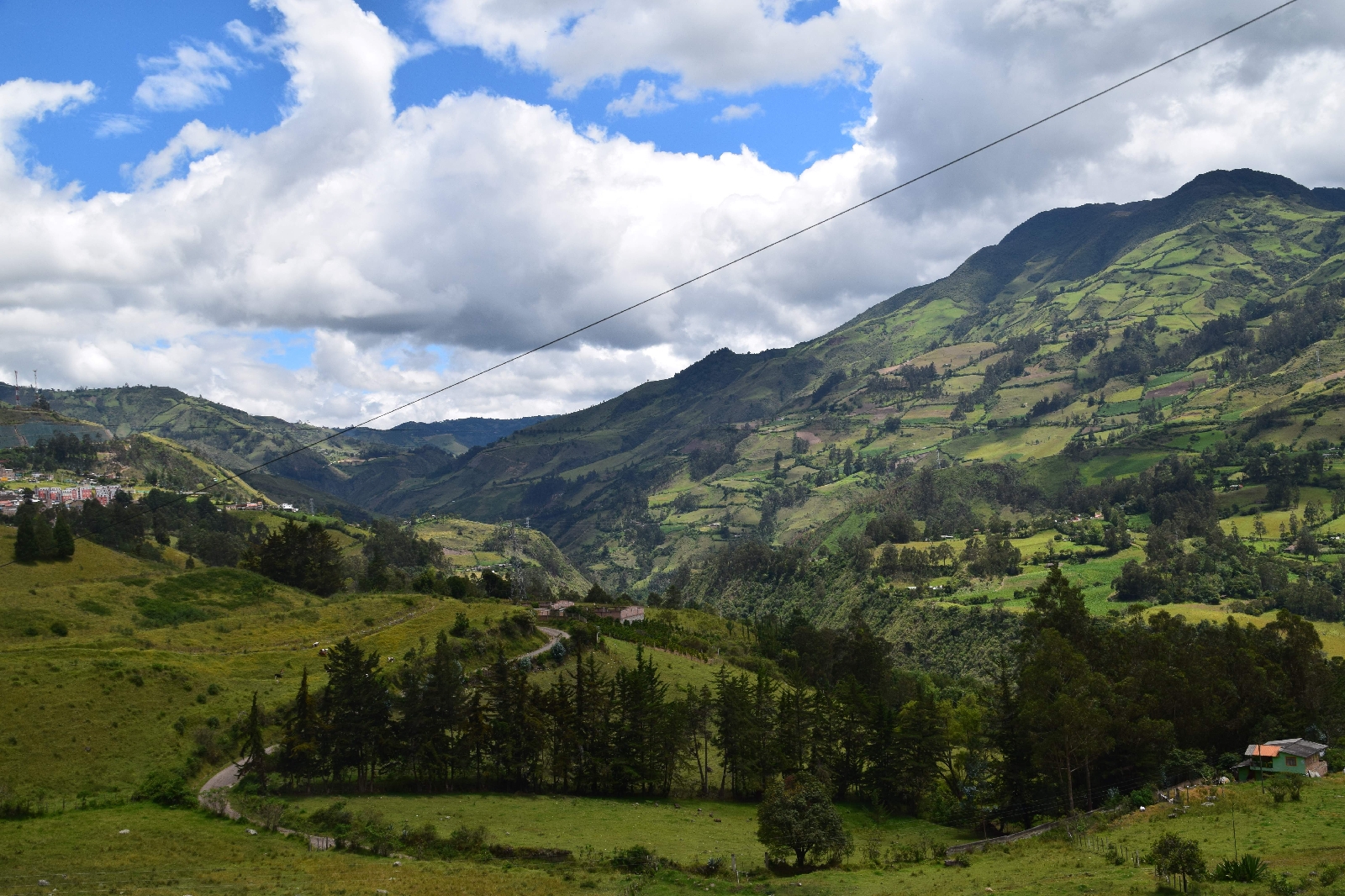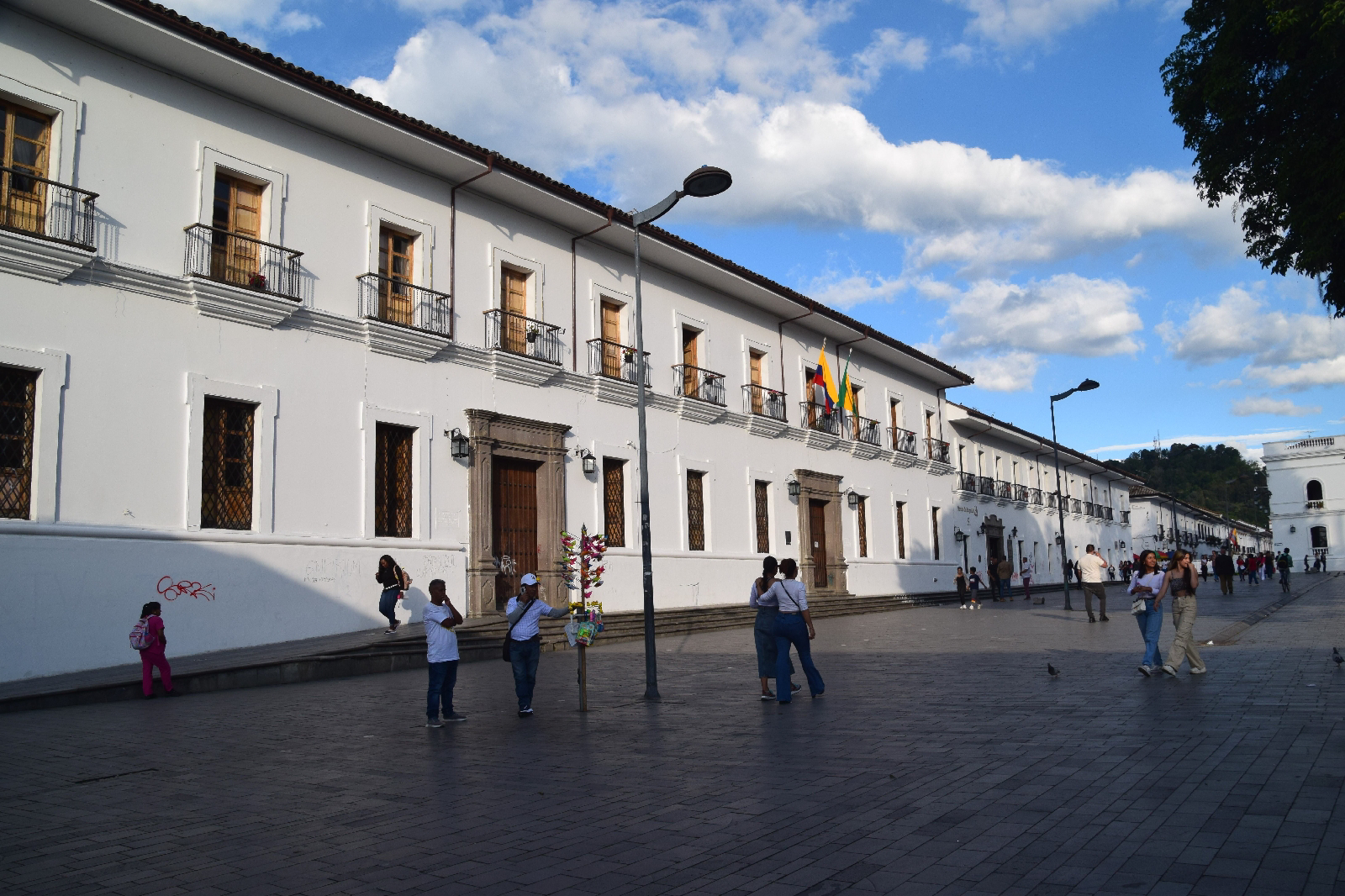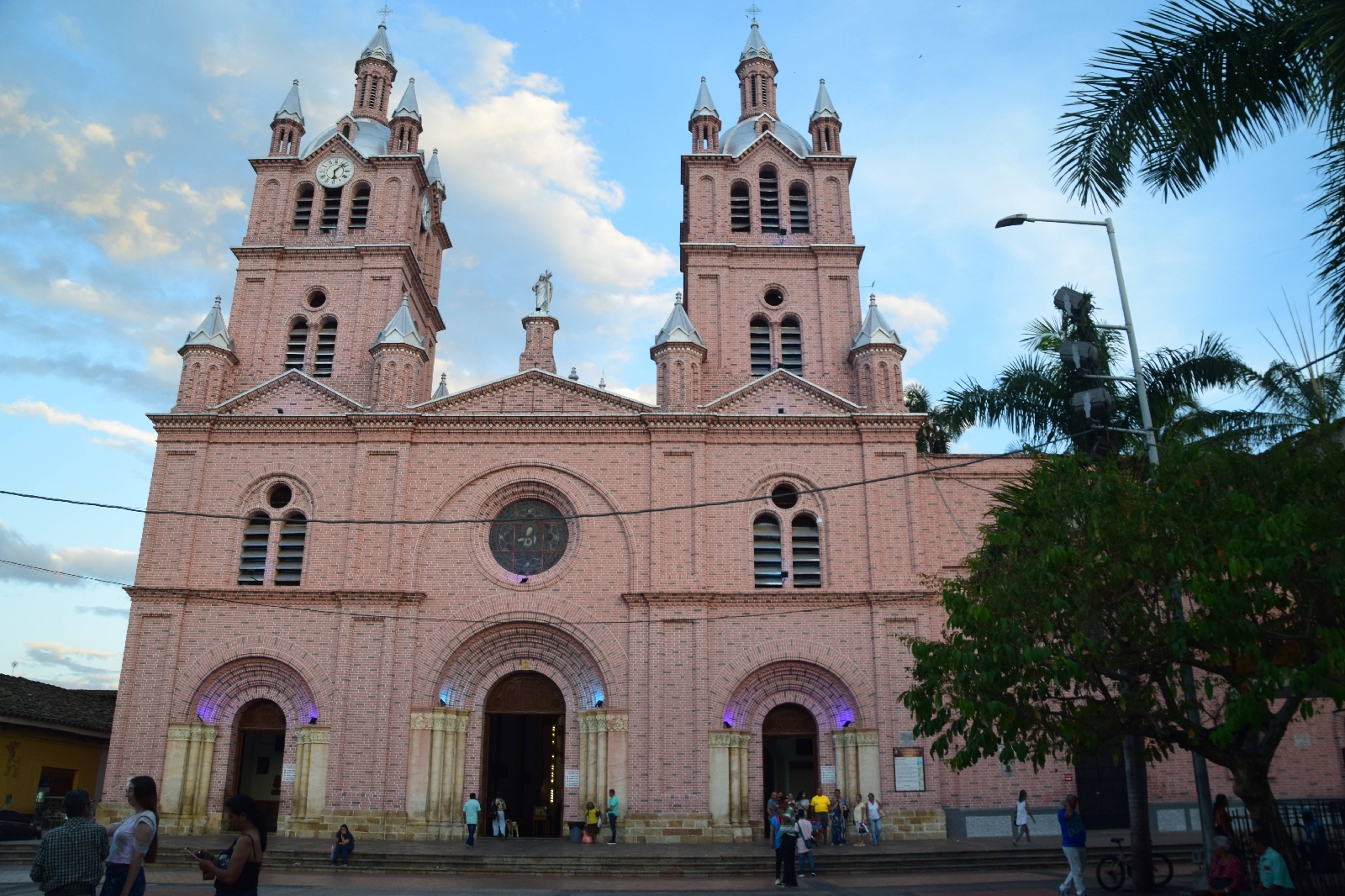Leaving our accommodation is starting to be a very time consuming business as lots of staff want their photos with us and the opportunity to say their good- byes and wish us luck with our trip. Otovalo was no exception.
The border was pretty obvious when we arrived there as it was full of taxis, people calling out to you, people trying to sell you things and the usual groups of people just hanging around. But no police of any sort, and no military, no uniforms of any sort. In anticipation of needing them imminently, we stopped on the side of the road and got our passports and other documents ready. We then set off slowly looking for the Ecuador checkpoint. To no avail. We then passed the Colombian checkpoint and decided that this wasn't right. We had entered Colombia and had no paperwork to prove we had either left Ecuador or entered Colombia. And nobody in any sort of uniform to ask anything. Bizarre we thought.
So we turned round and headed back to Ecuador. We passed the Colombian checkpoint without stopping and headed for the Ecuadorian building. In order to access it, we mounted the pavement and parked the bike outside the front door - cars were being herded elsewhere and we didn't really want to get in a queue to officially re-enter Ecuador, having not officially exited it. And everything was fine. It seemed like this was what we should have done in the first place but we have no idea how we would have done it.
We have mentioned that generally people are not very tall here. Officialdom behind glass windows tends to sit down behind desks with their computers to check our papers. The windows that you speak to them through are slightly lower than waist height on Paul. Our Spanish is far from perfect. This means that Paul has to get down on his knees at these windows to be able to deal with things. God knows what would happen if a basketball team went through here!
Colombia in comparison was all electronic and online and as things had been prepared in advance, all we needed to do was knock on the Customs Officer's door for him to unlock it and then give a few details so he could send emails to Paul and we were done. But only after a discussion about the colour of the bike. Our V5 document describes the bike as black. You can only have one colour; what you see is the petrol tank which is bright orange. It was too hard to explain in Spanish... the Officer got a bit bored with Paul's Spanish and there was an agreement that the bike was black. We were officially in Colombia!
Fearing the worst we had booked accommodation in Ipiales 5km from the border. It was nowhere, BUT, in the morning, it gave us the opportunity to visit Las Lajas - chosen not so long ago by the Daily Telegraph, apparently from a list of 23, as the most beautiful church in the world with its altar built into the rock face. But it would have been so much better without the rain and some blue sky...
Our direction is always generally North and as it turns out this, luckily, corresponds with a green zone on the UK FCO map of where and where not to go. Pasto was our next stop and we found ourselves in a modern bit of town with nice comfortable accommodation, coffee shops and nice restaurants. We forgot all about sightseeing and went cakeseeing at coffee shops - well not just seeing- and later on, we pre-empted Valentine's Day at a posh restaurant.
And then we hit the road again. It was Winter in Ecuador but it is very hot in Colombia. We are confused. The heat is also tiring; we are wanting to stop more but it's not always easy to find places. The roads are pretty good really but we are slowed up by being caught up in the sport of truck-jousting. Some of the trucks are very slow, especially up hills, which there are a lot of. The black smoke they spurt out is pretty grim too. We also overheat, all three of us, when going slow. So we just have to overtake whenever and wherever we can immaterial of the double yellow lines in the middle of the road. We will practice our excuses in Spanish for when we get stopped by the police.
In medieval jousting the objective is to unseat your opponent. The bike is quite powerful and relatively thin and we have not had issues overtaking. Cars aren't quite the same and from the bent armco, police presence, yellow tape and crowds peering over the edge, two cars had tragically been 'unseated' in a head-on and gone over a very high vertical drop. There would have been no hope for them.
What we have also seen encountered is refugees. We are told that they are Venezuelan but we don't understand the geography. We are also told that most of them are 'undesirables'; bad people. We were told the same thing in Chile. We have seen two sorts of refugees, maybe three. We have seen families with pushchairs and wheelbarrows walking along the side of the road primarily heading North. This is not a convoy, but isolated families. It is very sad indeed. We are in southern Colombia; we would have expected them to have crossed over in the north if they are heading for Central America and then the USA. According to the Colombians they are returning north having tried and failed to get into Peru and Chile. We don't know but we haven't seen any refugees prior to Colombia. We also see groups of three or four young men. We saw some hanging around speed humps so that, when the lorries slow down, they jump on the back of them. We also spot quite a lot of individuals walking on their own a long way from anything. We don't know whether they are locals or refugees.
Popayan. We came here to do one of our city tours and learn a bit about its history. It's also a pretty good idea to have a rest from the bike from time to time. In addition you meet others and Manon gave us some tips fkr elsewhere in Colombia as did Heather and Charles, who used to live in Lewisham who we had dinner with that evening. Popayan is called the White City as all the buildings in the historic centre are painted white, maximum two storey and protected by UNESCO. Well nearly all. They weren't always painted. At the time of the Spaniards chalk was used. According to our guide it was used because the indigenous population had a terrible problem with foot lice or 'chiggers' and chalk relieved the itching. Patches of unrendered, unchalked stone were left on some buildings for people to relieve their itching Baloo like. Popayan is also, in Colombia, the City of Universities, the City of Gastronomy and the City of Colombian Presidents. It tries to cover its bases to maintain tourist interest. It is also a cIty just on the edge of the FCO red zone. The buildings that were something other than white used their colour to signify whether they were courts or other things.
On our trip so far accommodation, where it existed, has been available. In Colombia we are finding for the first time that we are not the only guests. This doesn't always help the budget. On our first night in Popayan there was an electrical blackout over most of the historic centre. We struggled to find somewhere to eat but eventually found a pizzeria that had power. Just as interesting was that it had a collection of small vintage Japanese motorcycles including a 1967 Yamaha 250 - Paul had guessed 1968. In addition, all its pizzas were named after Italian motorcycles - Paul chose the Agusta after Bernardo who sorted our bike in Montevideo nearly four months ago. Well clearly Paul got talking and we had to return the following day with our bike for the photo shoot. Not just the bike. Shame it was a bit dirty.
We have been careful with the police here. We wave and smile at them whenever we see them. We watch our speed if we see them about, though it is difficult to maintain 20km/h when that is imposed. Anyway we spotted a police pickup a few vehicles in front and obeyed the rules on speed and overtaking until a police motorcycle came up behind us and signalled that we should pull to oneside. The police motorcycle stopped alongside us making it difficult for others to pass but he was allowed to. There were two policemen on the bike. The rider had a submachine gun across his chest whilst the pillion had a rifle on his lap. They were both wearing black mirror goggles and black face masks totally obscuring their faces. And we chatted for 5 to 10 minutes about our bike...
We think we are in banana and sugarcane territory here in Colombia. Sometimes they are crappy old lorries that shouldn't be on the road. Sometimes they are cabs pulling up to five trailers - longer than Aussie road trains.
We have been joining dots on the map rather than searching out interesting roads and our next stop was Buga which was very hot and humid. Putting to one side some quaint painted single storey buildings its claim to fame was its Basilica which seemed to be quite modern and built in immaculate brickwork. Until we got close. Then we found that the immaculately straight and aligned mortar courses had been even more immaculately painted on to brick coloured render! Surely this was harder? Maybe it was some sort of Catholic penance for the sins of the bricklayer because beneath the brick coloured render with painted mortar courses was a brick wall with real mortar joints.
We are in Colombia so we need to go for that cup of coffee now. And maybe cake.




























